Angelica atropurpurea
Angelica atropurpurea purplestem Angelica
This native perennial plant is a member of the Apiaceae family and is thus related to the carrot and parsley. It is an erect, branching plant with a wide hollow stem that is usually deep purple or light purple with darker vertical stripes. The stalks of the upper leaves have prominent basal sheaths. There are three leaflets, but these are often subdivided again into 3's or 5's. The plant can grow 4-9 feet high and is common around stream banks, wet woods and swamps. This species prefers full to partial sunlight.
The flowers, bloom for about 3 weeks from June to early July. The individual flowers are small but found in a spherical umbrella-like cluster that can be 3-9 inches in diameter. Each of these umbels is further divided into 20-45 smaller clusters (umbellets) that contain many small individual flowers. The flower color is white, or greenish-white and has 5 petals with incurved tips, 5 stamens and a pistil. The fruit is a flattened seed-like double achene.
Unlike other similar but toxic species, this is an edible member of the carrot family. The stalks of this plant can be eaten like celery. In Colonial America, the plant was boiled to make candy and was used as an ingredient in cake. In Europe a similar plant was said to be a cure for alcoholism but this cannot be confirmed. Great caution should be taken before consuming this plant as it closely resembles poison-hemlock and water-hemlock that are deadly poisonous. There is also a very close resemblance to the cow parsnip (Heracleum lanatum), which has a phototoxic effect if touched. Cow parsnip does not have a purple stem and has fewer leaflets, but has a similar leaf sheath. Poison-hemlock and water-hemlock lack the large leaf sheaths and poison-hemlock only has purple spots on the stem. Great angelica is also the only one of this group of similar large plants that has spherical flower clusters so this is the key identifying trait.
Habitat & Range
Grows in swamps, moist meadows & stream banks.
Present throughout the state.
| EMP: | OBL |
|---|---|
| NCNE: | OBL |
Phenology
Flowers June through August.
Characteristics
Stem hollow, stout and smooth, and turn purple when mature
Fruit oblong-elliptic, rounded at the base
Plant Codes
S-rank: S4 (Apparently secure)
G-rank: G5 (Secure)
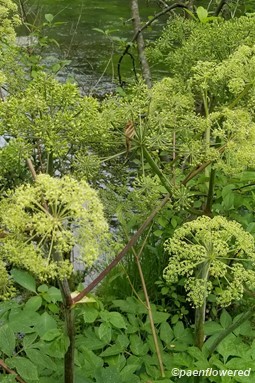
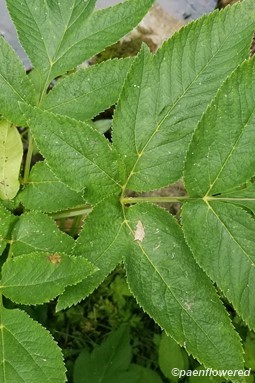
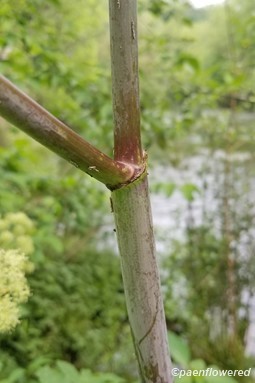
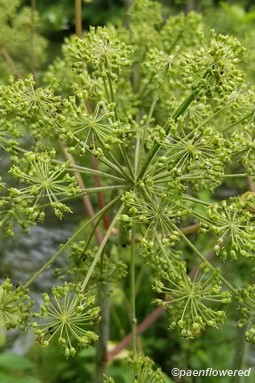
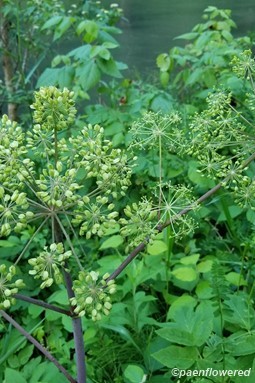
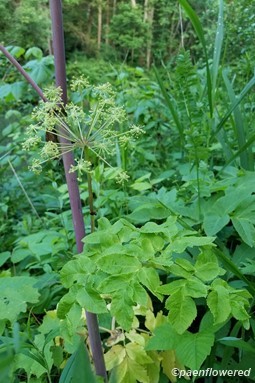
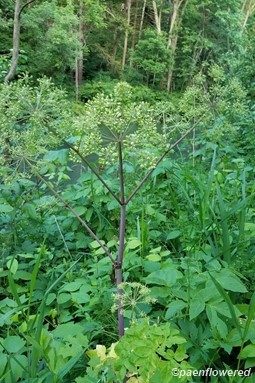
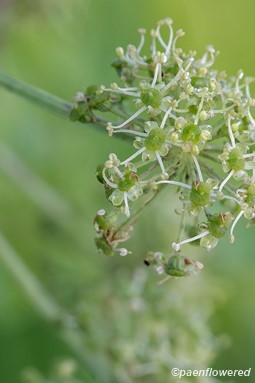


Comments
Have you spotted this plant in your area? We'd love to hear about your experience! Share your comments or questions about the plant below. Comments are moderated before posting.